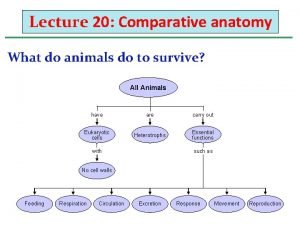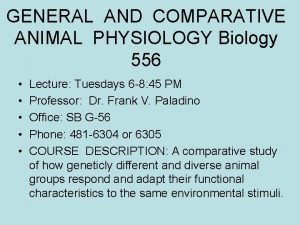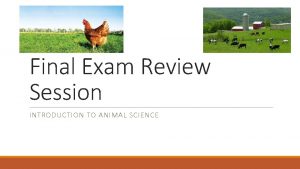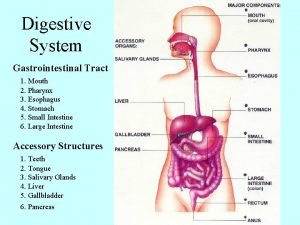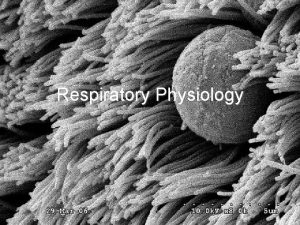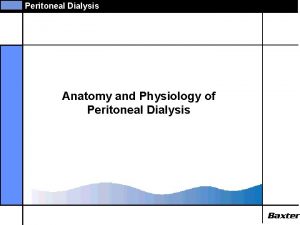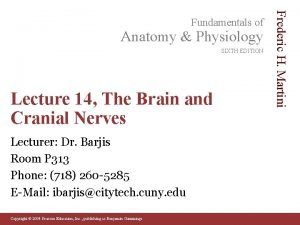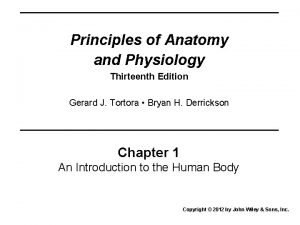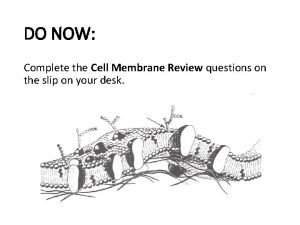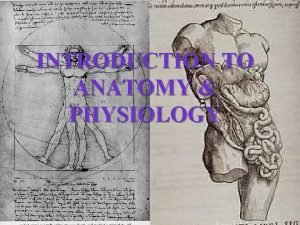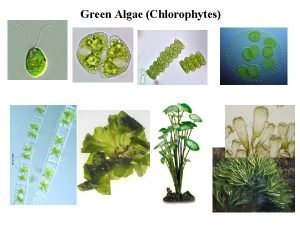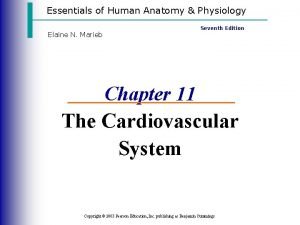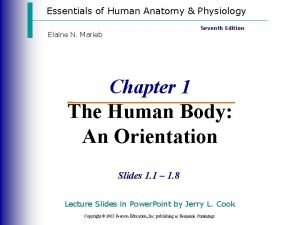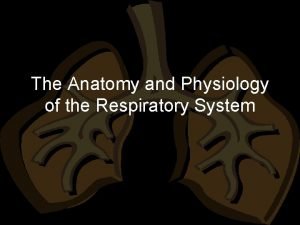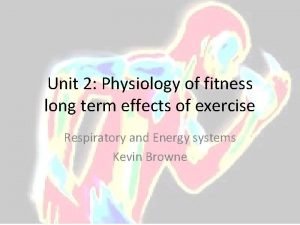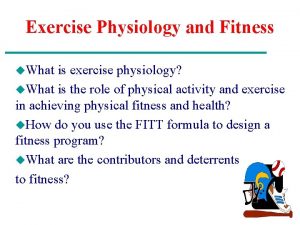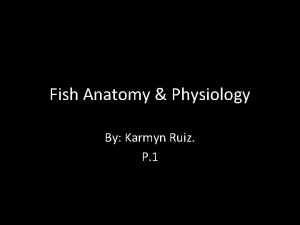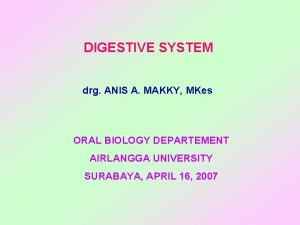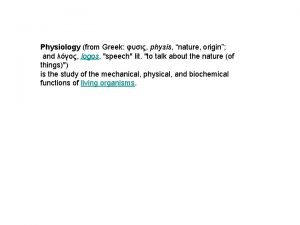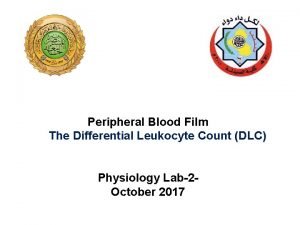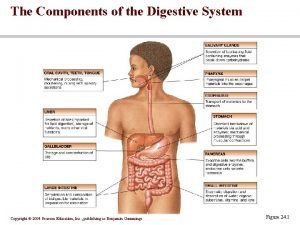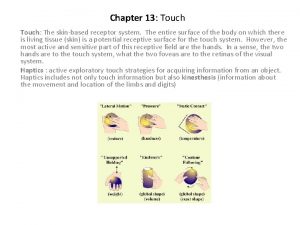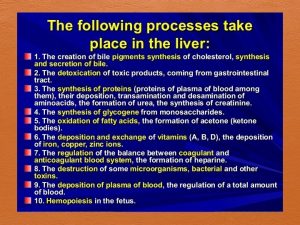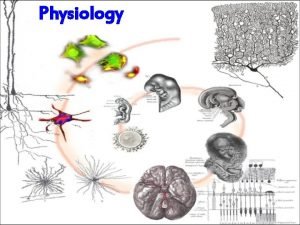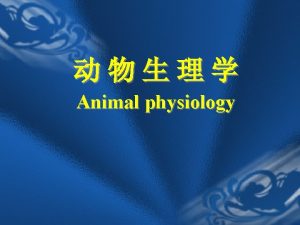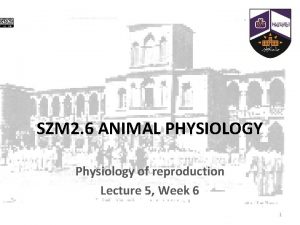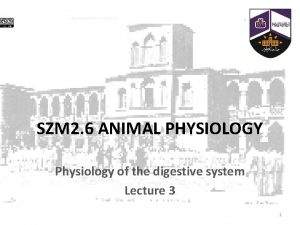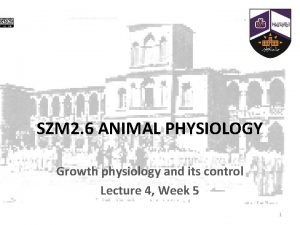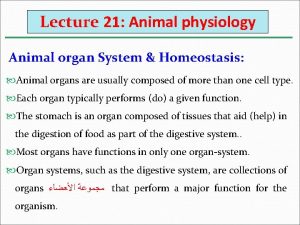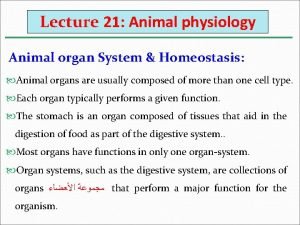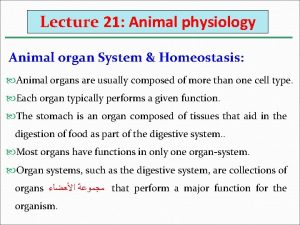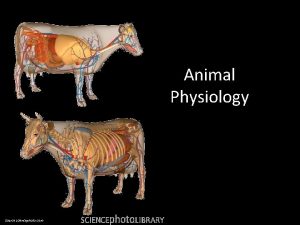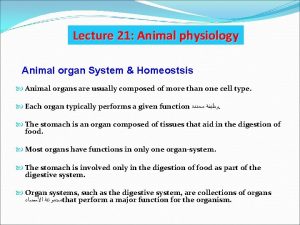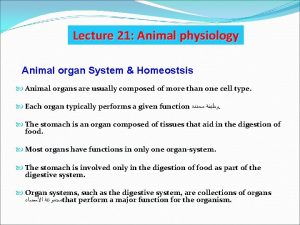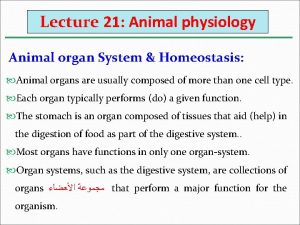Animal Physiology Exam 1 Animal Physiology Exam 1













































































- Slides: 77

Animal Physiology – Exam 1

Animal Physiology – Exam 1

Animal Physiology – Exam 1

Animal Physiology – Exam 1

Animal Physiology – Exam 1 $200 $200 $400 $400 $600 $600 $800 $800 $1000 $1000

Animal Physiology – Exam 1 Cell Structure

Animal Physiology – Exam 1 Cell Structure Enzymes, solutes, & transport

Animal Physiology – Exam 1 Cell Structure Enzymes, Solutes, & Transport Nutrition & Metabolism

Animal Physiology – Exam 1 Cell Structure Enzymes, Solutes, & Transport Nutrition & Metabolism Cellular Metabolism

Animal Physiology – Exam 1 Cell Structure Enzymes, Solutes, & Transport Nutrition & Metabolism Cellular Metabolism Neural & Endocrine Systems

Animal Physiology – Exam 1 Cell Structure Enzymes, Solutes, & Transport Nutrition & Metabolism Cellular Metabolism Neural & Endocrine Systems Environmental Water

Animal Physiology – Exam 1 Cell Structure Enzymes, Solutes, & Transport Nutrition & Metabolism Cellular Metabolism Neural & Endocrine Systems Environmental Water $200 $200 $400 $400 $600 $600 $800 $800 $1000 $1000

Animal Physiology – Exam 1 Cell Structure $200 The type of cell responsible forming boundaries between the animal and its environment

Animal Physiology – Exam 1 Answer What is an epithelial cell? Home

Animal Physiology – Exam 1 Cell Structure $400 Unlike proteins, carbohydrates are only found on this part of the plasma membrane

Animal Physiology – Exam 1 Answer What is the exterior surface? Home

Animal Physiology – Exam 1 Cell Structure $600 Incorporation of this molecule in a plasma membrane increases its rigidity

Animal Physiology – Exam 1 Answer What is cholesterol? Home

Animal Physiology – Exam 1 Cell Structure $800 The type of epithelial cell connection that allows for the exchange of small molecules between adjacent cells

Animal Physiology – Exam 1 Answer What is a gap junction? Home

Animal Physiology – Exam 1 Cell Structure $1000 A model used to describe the plasma membrane structure, emphasizing that it lacks inter -lipid bonds and is interspersed with proteins

Animal Physiology – Exam 1 Answer What is the fluid-mosaic model? Home

Animal Physiology – Exam 1 Enzymes, Solutes, & Transport $200 This 3 -dimensional protein structure reveals its functional regions

Animal Physiology – Exam 1 Answer What is tertiary structure? Home

Animal Physiology – Exam 1 Enzymes, Solutes, & Transport $400 A term used to describe different forms of the same enzyme within an individual

Animal Physiology – Exam 1 Answer What is an isozyme? Home

Animal Physiology – Exam 1 Enzymes, Solutes, & Transport $600 The type of response observed when different forms of an enzyme are synthesized as a result of environmental change

Animal Physiology – Exam 1 Answer What is a chronic response? Home

Animal Physiology – Exam 1 Enzymes, Solutes, & Transport $800 The Na+-K+ ATPase pump is an example of this specific type of molecular transport

Animal Physiology – Exam 1 Answer What is primary active transport? Home

Animal Physiology – Exam 1 Enzymes, Solutes, & Transport $1000 The force required to prevent diffusion of water along an osmotic gradient

Animal Physiology – Exam 1 Answer What is osmotic pressure? Home

Animal Physiology – Exam 1 Nutrition & Metabolism $200 These critical, organic components of metabolism must be obtained from the environment

Animal Physiology – Exam 1 Answer What are vitamins? Home

Animal Physiology – Exam 1 Nutrition & Metabolism $400 This type of energy can be used for all forms of physiological work

Animal Physiology – Exam 1 Answer What is chemical energy? Home

Animal Physiology – Exam 1 Nutrition & Metabolism $600 Homeotherms need to expend energy in order to maintain a consistent internal body temperature when they are exposed to an environment above or below this temperature range

Animal Physiology – Exam 1 Answer What is thermoneutral zone? Home

Animal Physiology – Exam 1 Nutrition & Metabolism $800 This term describes the ratio of moles of CO 2 produced to moles of O 2 consumed, per unit time

Animal Physiology – Exam 1 Answer What is the respiratory exchange ratio (R)? Home

Animal Physiology – Exam 1 Nutrition & Metabolism $1000 Smaller individuals have this type food requirement, when compared with larger animals in related taxonomic groups

Animal Physiology – Exam 1 Answer What is a greater food requirement? Home

Animal Physiology – Exam 1 Cellular Metabolism $200 This process uses energy released from electron transfer to create ATP in the mitochondria

Animal Physiology – Exam 1 Answer What is oxidative phosphorylation? Home

Animal Physiology – Exam 1 Cellular Metabolism $400 The net glycolytic ATP production from one molecule of glucose

Animal Physiology – Exam 1 Answer What is 2 ATP? Home

Animal Physiology – Exam 1 Cellular Metabolism $600 Anaerobic catabolism requires LDH in order to covert this molecule to lactic acid

Animal Physiology – Exam 1 Answer What is pyruvate? Home

Animal Physiology – Exam 1 Cellular Metabolism $800 Under anaerobic conditions, this causes the Kreb’s cycle to shut down

Animal Physiology – Exam 1 Answer What is an excessive build-up of reduced electron carriers NADH and FADH 2 ? Home

Animal Physiology – Exam 1 Cellular Metabolism $1000 One example is creatine phosphate, which contributes to ATP production by transferring a phosphate group to ADP

Animal Physiology – Exam 1 Answer What are phosphagens? Home

Animal Physiology – Exam 1 Neural & Endocrine Systems $200 This part of the brain is responsible for maintaining homeostatic control systems.

Animal Physiology – Exam 1 Answer What is the diencephalon? Home

Animal Physiology – Exam 1 Neural & Endocrine Systems $400 This division of the autonomic nervous system controls the involuntary “fight or flight” response.

Animal Physiology – Exam 1 Answer What is the sympathetic nervous system? Home

Animal Physiology – Exam 1 Neural & Endocrine Systems $600 This is the reason why signal conduction of the endocrine system is slower than in the nervous system.

Animal Physiology – Exam 1 Answer What is because the hormones are in the blood and require time for undirected transport? Home

Animal Physiology – Exam 1 Neural & Endocrine Systems $800 If axon diameter increases, velocity of the action potential changes in this direction.

Animal Physiology – Exam 1 Answer What is increases? Home

Animal Physiology – Exam 1 Neural & Endocrine Systems $1000 During the delayed phase of the mammalian stress response, the anterior pituitary releases this hormone, which eventually results in an increase in fat catabolism.

Animal Physiology – Exam 1 Answer What is ACTH (adrenocorticotropic hormone)? Home

Animal Physiology – Exam 1 Environmental Water $200 The proportion of total atmospheric pressure due to water vapor.

Animal Physiology – Exam 1 Answer What is water vapor pressure? Home

Animal Physiology – Exam 1 Environmental Water $400 Animals in terrestrial environments lose water both through respiration and by these means.

Animal Physiology – Exam 1 Answer What is across the skin’s surface? Home

Animal Physiology – Exam 1 Environmental Water $600 In terrestrial environments, increasing an animal’s body temperature does this to its net rate of water evaporation.

Animal Physiology – Exam 1 Answer What is decrease? Home

Animal Physiology – Exam 1 Environmental Water $800 In freshwater environments, a fish’s plasma is this, compared to the water.

Animal Physiology – Exam 1 Answer What is hyperosmotic? Home

Animal Physiology – Exam 1 Environmental Water $1000 In elasmobranches, this chemical counteracts the toxic effects of urea, which is used to increase the osmolarity of their tissues and prevent water loss to the saltwater environment.

Animal Physiology – Exam 1 Answer What is TMAO? Home

Animal Physiology – Exam 1

Animal Physiology – Exam 1 The really hard final Jeopardy answer…

Animal Physiology – Exam 1 In contrast to running and flying, the cost of locomotion for swimming is less because of this reason

Animal Physiology – Exam 1 Answer What is because swimming includes drifting, which allows movement due to a store of potential energy?

Animal Physiology – Exam 1 Thanks for playing! Good Luck!
 Animal physiology exam 1
Animal physiology exam 1 Teks anatomy and physiology
Teks anatomy and physiology Animal physiology
Animal physiology Comparative animal physiology notes
Comparative animal physiology notes Animal physiology guyton
Animal physiology guyton Unit 26 animal anatomy physiology and nutrition
Unit 26 animal anatomy physiology and nutrition Animal science final exam
Animal science final exam What is an organelle
What is an organelle Animal rights vs animal welfare
Animal rights vs animal welfare Venn diagram plant vs animal cells
Venn diagram plant vs animal cells Physiology videos
Physiology videos 3 layers of muscle
3 layers of muscle Salisbury and ross plant physiology
Salisbury and ross plant physiology Large intestine histology
Large intestine histology Cengage anatomy and physiology
Cengage anatomy and physiology Le jeu de dames netflix
Le jeu de dames netflix Peritoneal equilibration test
Peritoneal equilibration test Oblongata
Oblongata Fontan physiology
Fontan physiology Medial lateral distal proximal
Medial lateral distal proximal Sagittal section of the abdominopelvic cavity
Sagittal section of the abdominopelvic cavity Olecranal region
Olecranal region Cell physiology membrane transport worksheet
Cell physiology membrane transport worksheet Wpigastric region
Wpigastric region Anatomy and physiology
Anatomy and physiology Reproduction of algae
Reproduction of algae Chapter 13 anatomy and physiology of pregnancy
Chapter 13 anatomy and physiology of pregnancy Anatomy and physiology
Anatomy and physiology Microbial physiology notes
Microbial physiology notes Memory physiology
Memory physiology Cell physiology membrane transport
Cell physiology membrane transport Summation muscle
Summation muscle Law of mass action physiology
Law of mass action physiology Organ orientation
Organ orientation Luteinizing hormone in male reproductive system
Luteinizing hormone in male reproductive system What produces bile
What produces bile Anatomy and physiology
Anatomy and physiology Memory physiology
Memory physiology Pancreas histology slide
Pancreas histology slide Chapter 10 blood anatomy and physiology
Chapter 10 blood anatomy and physiology Types of physiology
Types of physiology Physiology of respiration
Physiology of respiration Mabp = co x tpr
Mabp = co x tpr Thyroid stimulating hormone
Thyroid stimulating hormone Anatomy and physiology chapter 2
Anatomy and physiology chapter 2 Unit 2 physiology of fitness
Unit 2 physiology of fitness Isometric vs isotonic
Isometric vs isotonic Cycloid scales
Cycloid scales Parasimpathetic
Parasimpathetic Introduction of urinary system
Introduction of urinary system Unit 5 anatomy and physiology
Unit 5 anatomy and physiology Science olympiad anatomy and physiology 2020 cheat sheet
Science olympiad anatomy and physiology 2020 cheat sheet Bio 137
Bio 137 Human anatomy and physiology 10th edition
Human anatomy and physiology 10th edition Physiological psychology
Physiological psychology 7 functions of the kidney
7 functions of the kidney Anatomy and physiology chapter 1
Anatomy and physiology chapter 1 Anatomy and physiology of swine
Anatomy and physiology of swine Anatomy and physiology
Anatomy and physiology Muscle physiology
Muscle physiology Physis e logos
Physis e logos Dlc in physiology
Dlc in physiology Anatomy and physiology
Anatomy and physiology Muscularis mucosae
Muscularis mucosae Flippases function
Flippases function Chemoreceptor
Chemoreceptor Physiology of touch
Physiology of touch Anatomy and physiology of psoriasis
Anatomy and physiology of psoriasis Chapter 14 the digestive system and body metabolism
Chapter 14 the digestive system and body metabolism Anatomy and physiology of the retina
Anatomy and physiology of the retina Http://anatomy and physiology
Http://anatomy and physiology Functional organization of the human body
Functional organization of the human body Function of liver physiology
Function of liver physiology Sarcoplasm
Sarcoplasm Irn.org anatomy and physiology
Irn.org anatomy and physiology Physiology of cervix
Physiology of cervix Aohs foundations of anatomy and physiology 1
Aohs foundations of anatomy and physiology 1 Segmental anatomy of the liver
Segmental anatomy of the liver


